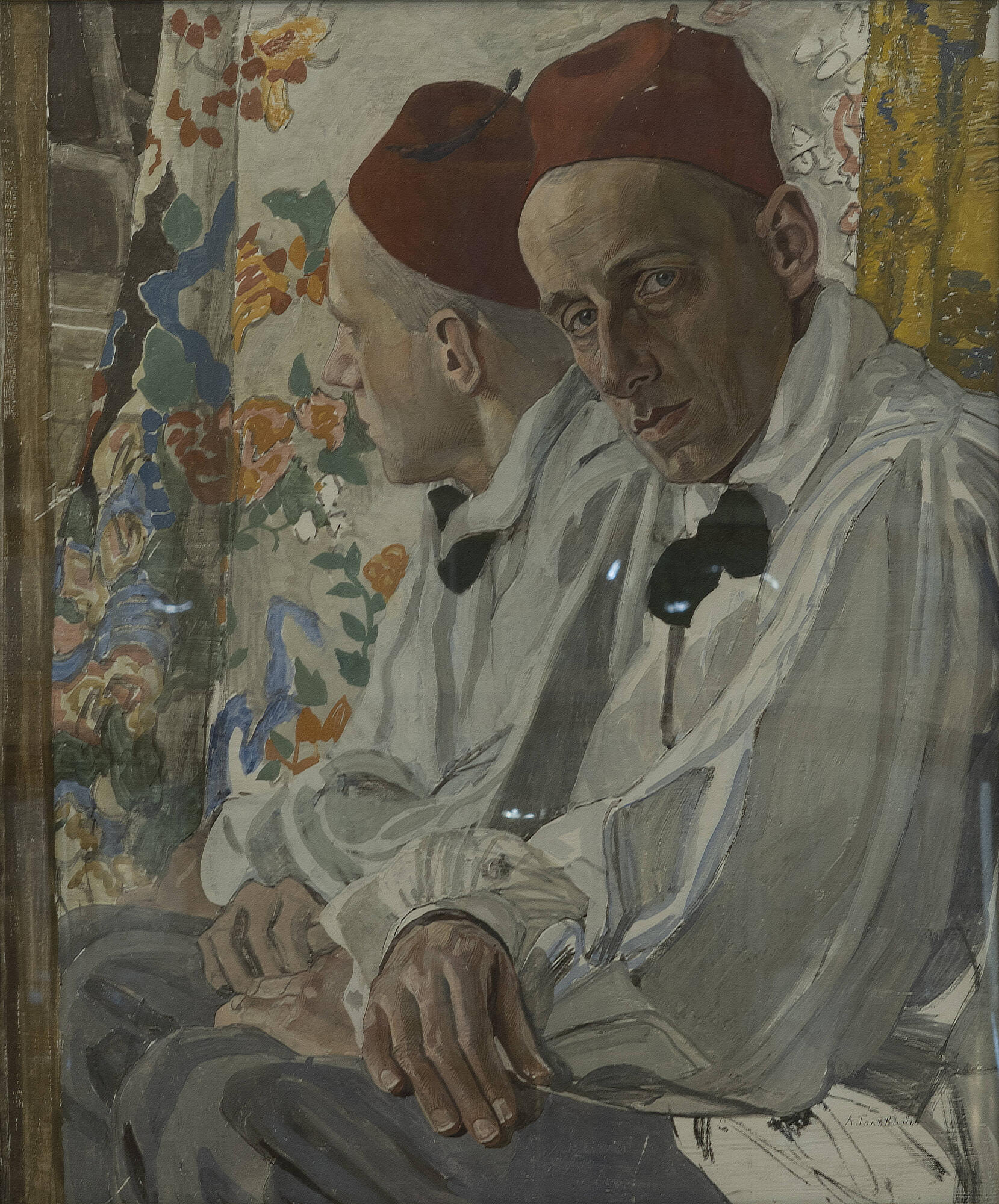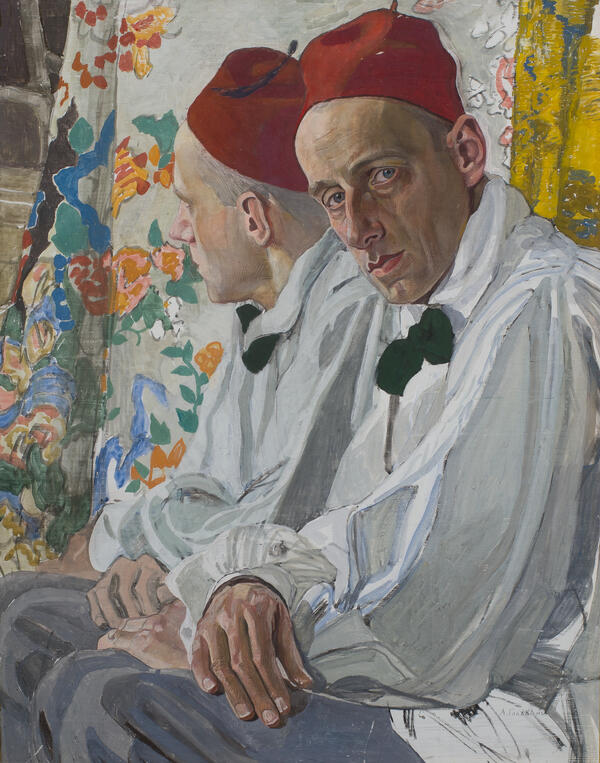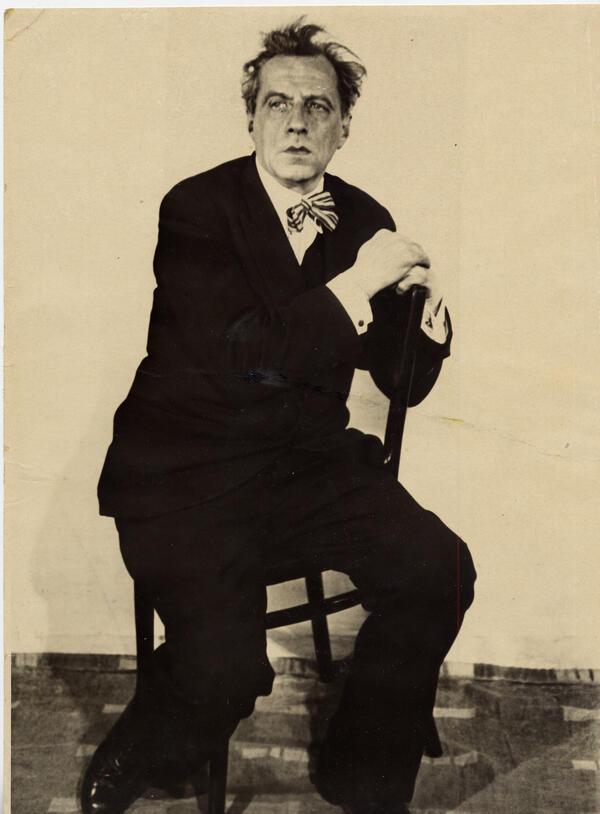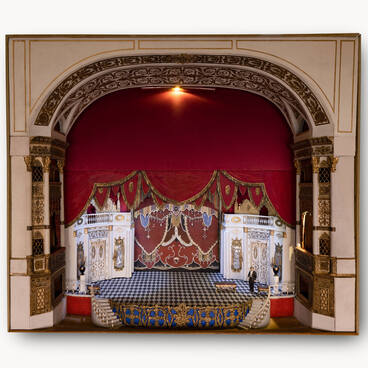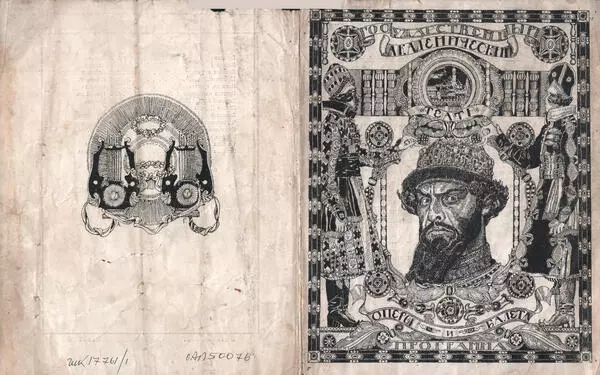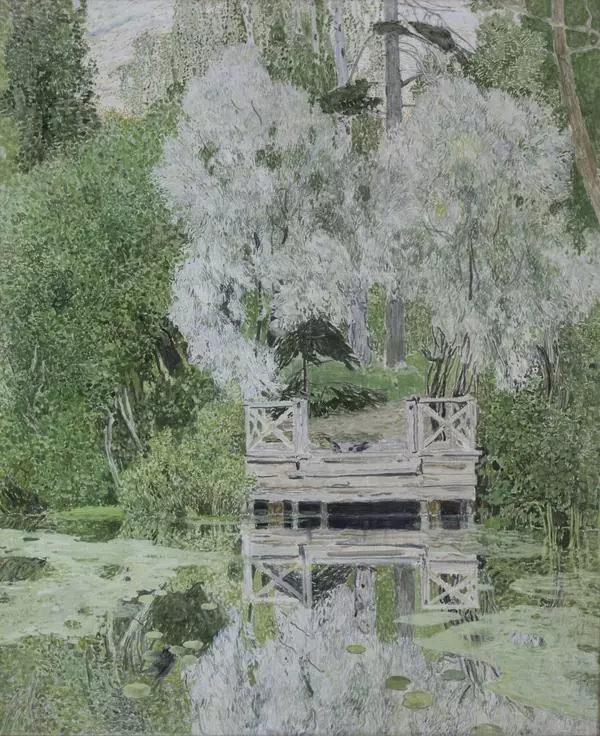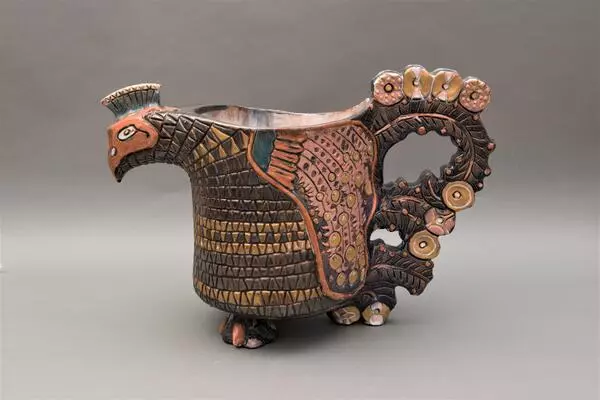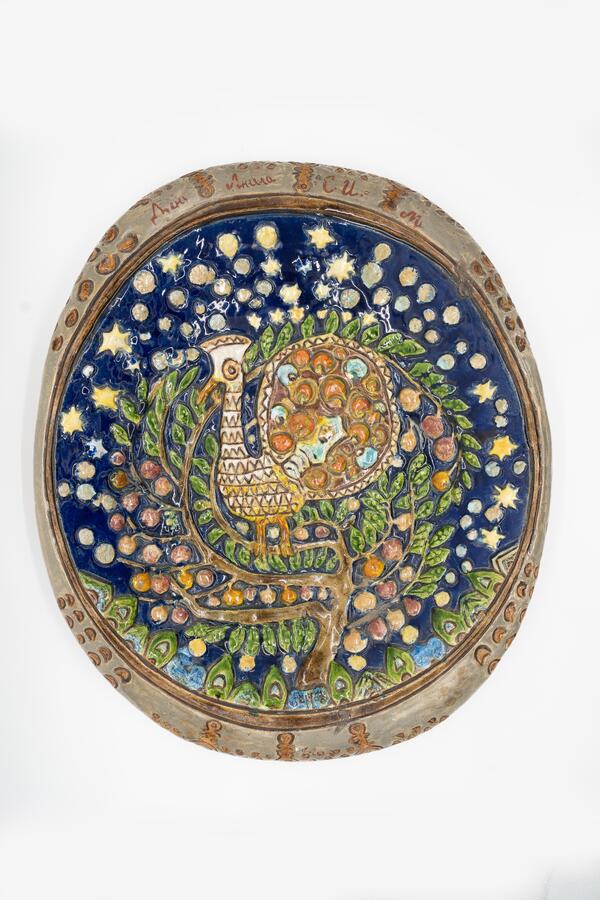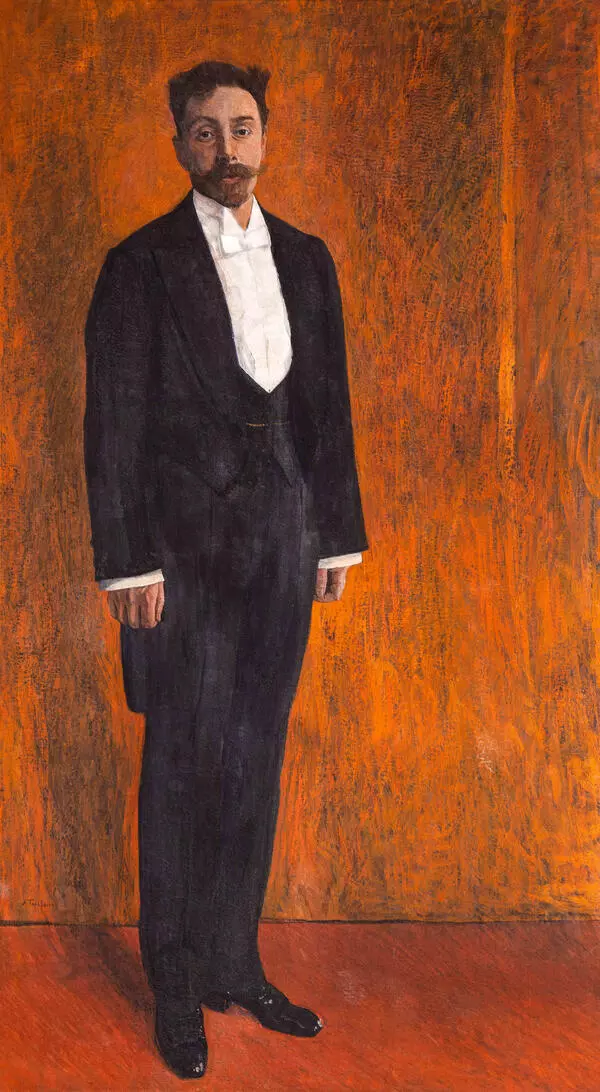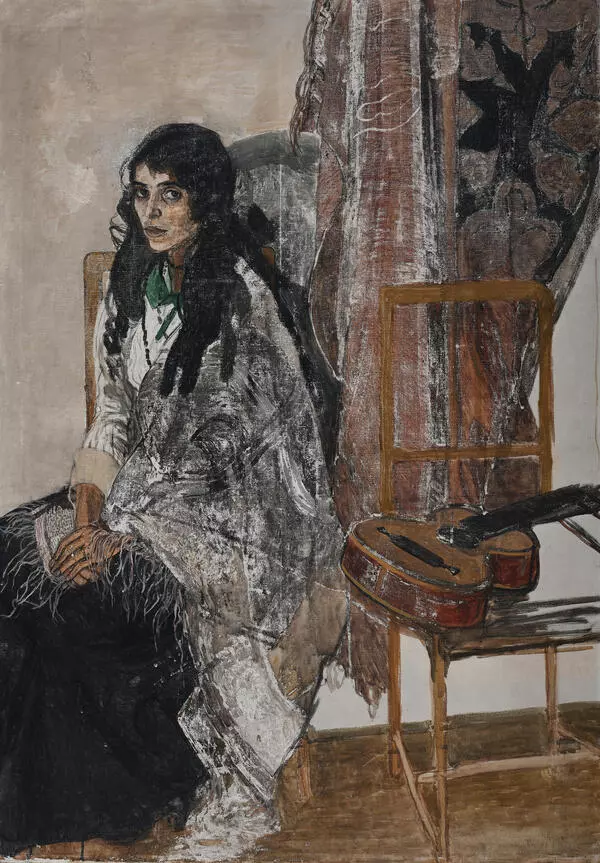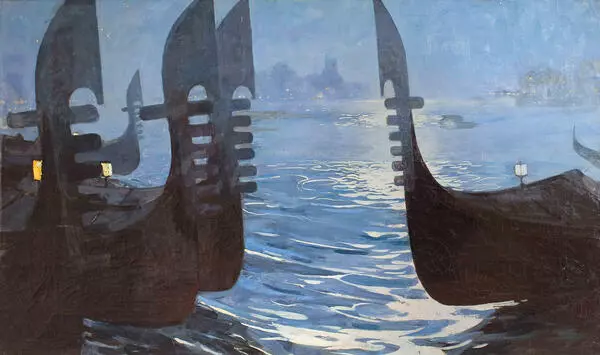The collaboration between the director Vsevolod Meyerhold and the artist Alexander Golovin is rightfully considered an outstanding phenomenon in the history of early 20th-century theater. Through their work, the St. Petersburg Imperial Theaters hosted such plays as “Orpheus and Eurydice”, “The Storm” and “Dom Juan.” The artist and the director saw eye to eye both in theater and real life and became good friends. The museum houses a portrait of Meyerhold by Golovin painted in 1917 during the staging process of the premiere of the play “Masquerade.”
Vsevolod Meyerhold is depicted against a bright ornate curtain and a large mirror. This composition choice emphasizes Meyerhold’s connection with Dr. Dapertutto, the mischievous character from a fairy tale by Ernst Theodor Amadeus Hoffmann. Dapertutto, whose name means “everywhere” in Italian, steals the reflections of those unfortunate who happen to be looking in the mirror.
Meyerhold adopted the name Dapertutto as a pseudonym. He bore a striking resemblance to the character: in Hoffmann’s description, the doctor was “a tall, meager gentleman with a thin hawklike nose, fiery eyes and spiteful puckered lips.”
Meyerhold was the tireless seeker of theater innovations, and the portrait conveys his features perfectly. The tired and anxious look with which the director gazes upon the viewers is juxtaposed to the hopeful one reflected in the mirror and directed far away. The whole image seems to serve as a prophecy of his difficult path.
Vsevolod Meyerhold was born in Penza in 1874. He graduated from the gymnasium and became a student at the law school of Moscow University. However, a year later, he passed an exam at the Moscow Philharmonic Institution and was accepted to the second year. The graduates of that year would later form the basis of the Moscow Art Theater under the direction of Konstantin Stanislavski and Vladimir Nemirovich-Danchenko.
Meyerhold worked at the Moscow Art Theater until 1902. Throughout his acting career, he played a lot of important roles. Some of them proved to be life-changing, especially the role of the young pioneer director Konstantin Treplev from the play “The Seagull” by Chekhov. Treplev’s words “But we need new forms!” seemed to have inspired Meyerhold to go to the province and become a director himself.
Vsevolod Meyerhold is depicted against a bright ornate curtain and a large mirror. This composition choice emphasizes Meyerhold’s connection with Dr. Dapertutto, the mischievous character from a fairy tale by Ernst Theodor Amadeus Hoffmann. Dapertutto, whose name means “everywhere” in Italian, steals the reflections of those unfortunate who happen to be looking in the mirror.
Meyerhold adopted the name Dapertutto as a pseudonym. He bore a striking resemblance to the character: in Hoffmann’s description, the doctor was “a tall, meager gentleman with a thin hawklike nose, fiery eyes and spiteful puckered lips.”
Meyerhold was the tireless seeker of theater innovations, and the portrait conveys his features perfectly. The tired and anxious look with which the director gazes upon the viewers is juxtaposed to the hopeful one reflected in the mirror and directed far away. The whole image seems to serve as a prophecy of his difficult path.
Vsevolod Meyerhold was born in Penza in 1874. He graduated from the gymnasium and became a student at the law school of Moscow University. However, a year later, he passed an exam at the Moscow Philharmonic Institution and was accepted to the second year. The graduates of that year would later form the basis of the Moscow Art Theater under the direction of Konstantin Stanislavski and Vladimir Nemirovich-Danchenko.
Meyerhold worked at the Moscow Art Theater until 1902. Throughout his acting career, he played a lot of important roles. Some of them proved to be life-changing, especially the role of the young pioneer director Konstantin Treplev from the play “The Seagull” by Chekhov. Treplev’s words “But we need new forms!” seemed to have inspired Meyerhold to go to the province and become a director himself.
